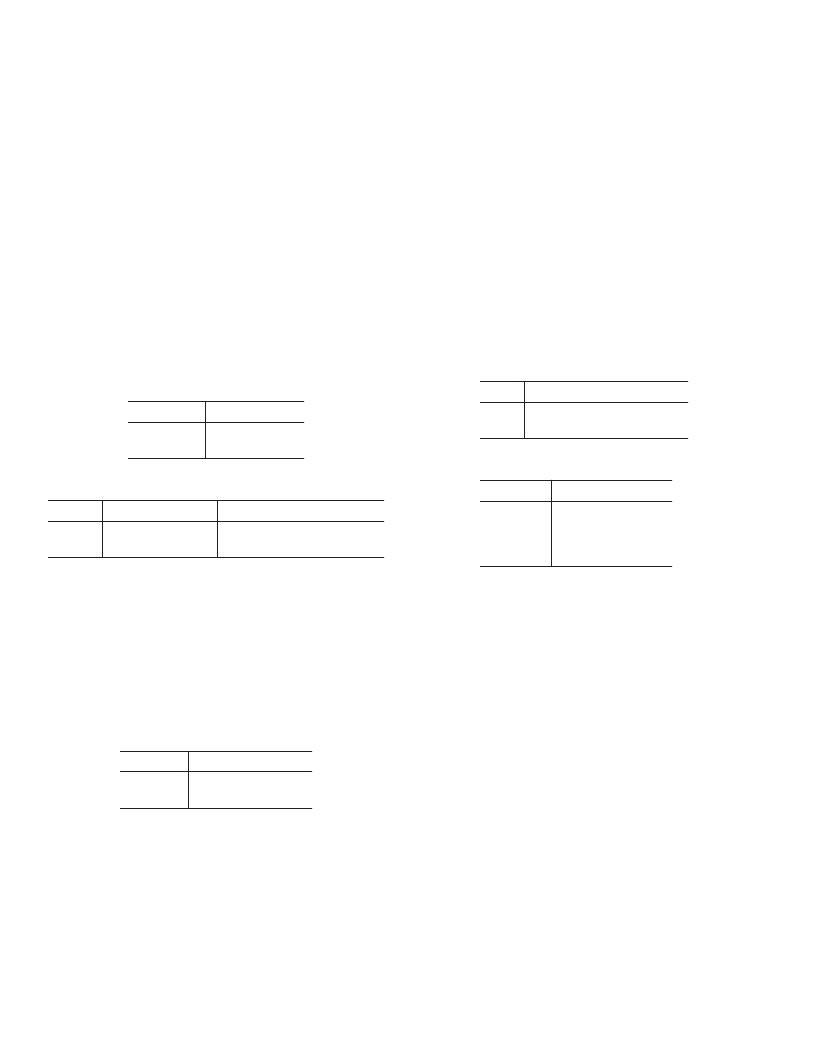- 您現(xiàn)在的位置:買賣IC網(wǎng) > PDF目錄373864 > AD1991ASV (ANALOG DEVICES INC) Class D/1-Bit Audio Power Output Stage PDF資料下載
參數(shù)資料
| 型號(hào): | AD1991ASV |
| 廠商: | ANALOG DEVICES INC |
| 元件分類: | 音頻/視頻放大 |
| 英文描述: | Class D/1-Bit Audio Power Output Stage |
| 中文描述: | 20 W, 4 CHANNEL, AUDIO AMPLIFIER, PQFP52 |
| 封裝: | MS-026ACC, TQFP-52 |
| 文件頁(yè)數(shù): | 6/11頁(yè) |
| 文件大?。?/td> | 194K |
| 代理商: | AD1991ASV |

REV. 0
–6–
AD1991
FUNCTIONAL DESCRIPTION
Device Architecture
The AD1991 is an 8-transistor, audio, power output stage. The
AD1991 is arranged internally as four transistor pairs that can
be used as two H-bridge outputs (2-channel mode) or as four
single-ended outputs (4-channel mode), using either two or four
TTL compatible inputs to control the transistors. A dead time
is automatically provided between the switching of the high-
side transistor and low-side transistor when the control inputs
change level, to ensure that both the high-side transistor and
low-side transistor are never on at the same time.
Clock Source and Channel Mode Selection
When the AD1991 is brought out of reset, the logic levels on
MODE0 and MODE1 are latched internally. MODE0 determines
the internal state machine clock source. MODE1 determines the
channel mode and the function of
ERR0
(see Tables I and II.)
When the internal clock is used, the CLK pin should not be
connected.
Table I. Clock Source Selection
MODE0
CLK Source
0
1
Internal
External
Table II. Channel Mode Selection
MODE1
Channel Mode
ERR0
Function
0
1
2-Channel Mode
4-Channel Mode
Data Loss Detection Output
Low-Side Disable Input
2-Channel Mode
Two loads are connected differentially—across OUTA and OUTB
and across OUTC and OUTD. Inputs INB and IND are unused
and should be tied to an appropriate dc voltage (see the Edge
Speed and Nonoverlap Settings section)
.
In this mode,
ERR0
is
an error output used to indicate data loss, which occurs when
there are no transitions on INA or INC for more than 50 ms.
This signal condition is hazardous in 2-channel mode because it
can cause a potentially large and harmful dc voltage across the
differential loads. Table III shows the input/output relationship.
Table III. Input/Output Relationship in 2-Channel Mode
Input
Controlled Output
INA
INC
OUTA, OUTB
OUTC, OUTD
4-Channel Mode
The 4-channel mode has two types of configuration: audio and
power supply. Neither of these configurations require data loss
detection. In the audio configuration, each single-ended load is
connected to the output through a blocking capacitor, which
prevents dc from reaching the load, thereby negating the need
for data loss detection. While in the power supply configuration,
it is desired to maintain a dc voltage on the load, also negating
the need for data loss detection. When used in the power supply
configuration, the four low-side transistors can also be disabled
and left permanently open if desired. This allows the loads to be
driven by switching only the high-side transistor on and off.
ERR0
is an input in 4-channel mode and is used to select
whether the four low-side transistors are enabled or disabled,
with 0 selecting disabled and 1 selecting enabled. Table IV
summarizes the function of
ERR0
in this mode. Table V shows
the input/output relationship.
Table IV.
ERR0
Function in 4-Channel Mode
ERR0
Low-Side Transistor Status
0
1
Disabled
Enabled
Table V. Input/Output Relationship in 4-Channel Mode
Input
Controlled Output
INA
INB
INC
IND
OUTA
OUTB
OUTC
OUTD
1-Channel Mode
One load is connected differentially—across OUTA and OUTC,
and OUTB and OUTD. This mono operation is established
by configuring the part for 2-channel mode and externally
connecting INA to INC, OUTA to OUTC, and OUTB to
OUTD (see Figure 4).
Thermal Protection
The AD1991 features thermal protection. When the die tempera-
ture exceeds approximately 135
°
C, the thermal warning error
output (
ERR2
) is asserted. If the die temperature exceeds
approximately 150
°
C, the thermal shutdown error output (
ERR3
)
is asserted. If this occurs, the part shuts down to prevent damage
to the part. When the die temperature drops below approximately
120
°
C, both error outputs de-assert and the part returns to nor-
mal operation.
Overcurrent Protection
The AD1991 features overcurrent or short-circuit protection. If
the current through any power transistors exceeds 5 A, the part
is muted and the overcurrent error output (
ERR1
) is asserted.
This is a latched error and does not clear automatically. To clear
the error condition and restore normal operation, the part must
be reset or
MUTE
must be asserted and de-asserted.
相關(guān)PDF資料 |
PDF描述 |
|---|---|
| AD1991 | Class D/1-Bit Audio Power Output Stage |
| AD1991ASVRL | Class D/1-Bit Audio Power Output Stage |
| AD1994ACPZRL | Audio Switching Amplifier |
| AD1994ACPZRL7 | Audio Switching Amplifier |
| AD203SN | Circular Connector; No. of Contacts:8; Series:LJTPQ00R; Body Material:Aluminum; Connecting Termination:Crimp; Connector Shell Size:17; Circular Contact Gender:Socket; Circular Shell Style:Wall Mount Receptacle |
相關(guān)代理商/技術(shù)參數(shù) |
參數(shù)描述 |
|---|---|
| AD1991ASVRL | 制造商:Analog Devices 功能描述:Audio Amp Speaker 1-CH Mono/2-CH Stereo/4-CH Stereo 40W Class-D 52-Pin TQFP T/R |
| AD1991ASVZ | 制造商:Analog Devices 功能描述:Audio Amp Speaker 1-CH Mono/2-CH Stereo/4-CH Stereo 40W Class-D 52-Pin TQFP 制造商:Analog Devices 功能描述:AUDIO POWER O/P STAGE CLASS D 1991 |
| AD1991ASVZRL | 制造商:Analog Devices 功能描述:Audio Amp Speaker 1-CH Mono/2-CH Stereo/4-CH Stereo 40W Class-D 52-Pin TQFP T/R |
| AD1992 | 制造商:AD 制造商全稱:Analog Devices 功能描述:Audio Switching Amplifier |
| AD1992_06 | 制造商:AD 制造商全稱:Analog Devices 功能描述:Audio Switching Amplifier |
發(fā)布緊急采購(gòu),3分鐘左右您將得到回復(fù)。